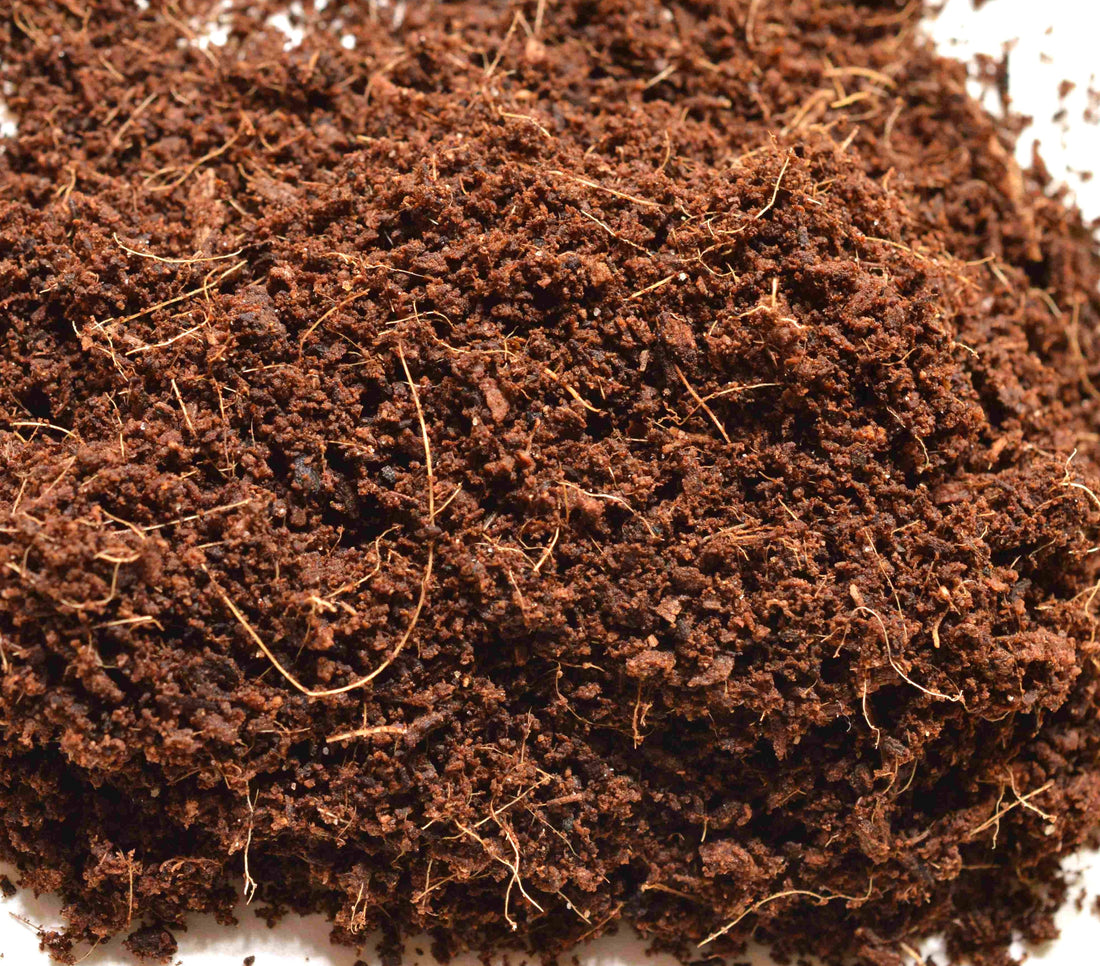When it comes to which potting mix is the best, there is really no right answer. Some swear by one type and some by another. Whether the mix contains a lot or a little organic matter, or whether it contains a certain amount of pumice or perlite or gravel is not the most important thing. It is entirely possible to have great success growing cacti and succulents in a peat-based soil, and it is entirely possible to have great success growing the same plants in a completely mineral potting mix. But it is important to understand what the potting mix does for the plant and whether the ingredients you use are actually beneficial.
Some basics about potting mix
In Norwegian, the term "soil" would include both organic and inorganic potting mixes, while the term in English means a more specific composition of organic and inorganic matter. From now on I will therefore rather use the word potting mix or just mix to simplify things.
The primary function of the potting mix is usually to provide nutrients for the roots to absorb. Efficient nutrient uptake often depends on active Mycorrhizae in the soil - i.e. fungi. The very fine threads that the mycorrhizal fungi make can absorb far more nutrients than the plant roots themselves. A symbiotic effect then occurs where the roots provide the fungi with carbohydrates, while receiving nutrients and minerals back from the fungi. Mycorrhiza also help to protect the roots against unwanted fungi and bacteria. This interaction occurs in over 90% of all plant species on Earth.
But the fungus cannot create nutrition out of nothing, and therefore it is often necessary to add fertilizer if the soil does not contain all the nutrients the plant needs. The usual "Cactus and succulent soil" that is available commercially in most garden centers is mostly a mixture of peat and some coarse sand. There is very little nutrition in the sand (which is usually quartz or quartzite), and there is not much nutrition in the peat either. Therefore, fertilizer is usually added to these soil bags. You also need to fertilize regularly so that the plant gets enough nutrition.
In the pictures below, you can see sand on the left and gravel on the right.


It is also possible to make a potting mix based entirely on gravel or crushed stone of various kinds. If you make a mixture of granite, amphibolite, sandstone, mica slate etc., you will be able to make a mix that contains all the nutrients a cactus needs, and it will then never be necessary to fertilize. This works because Mycorrhiza in the soil breaks down the rocks and extracts minerals which it exchanges with the roots for carbohydrates. The Mycorrhiza also helps with nitrogen fixing, providing nitrogen for the roots.
It is fascinating how you can grow the same species in peat and sand in one pot, and in 100% crushed stone in another. They will end up with different growth and may not look exactly alike, but that says something about how adaptable these plants are.
What should the potting mix consist of?
This is perhaps the heart of the question. What should a potting mix consist of? As mentioned above, the mix should preferably contribute nutrition to the plant, but this can be circumvented by fertilising. In hydroponic cultivation e.g., you may simply have the roots submerged in a water mixture with added nutrients the plant needs, with no potting mix at all. For the most part fertilizer is necessary, or at least highly recommended, for the vast majority of potting mixes.
Apart from providing nutrition, the potting mix should help keep the roots (and plant) stable, and it should allow for fast drainage and be well aerated. The stabilising factor is just so the plant doesnt fall and can be easily achieved. Fast drainage is a necessity to prevent root rot. A potting mix consisting of e.g. peat and sand will drain much slower than one made of pure crushed rocks. You don't want the potting mix to stay wet for very long. Finally, aeration is often an overlooked factor. Having a potting mix with lots of air pockets is highly beneficial to the roots and the mycorrhiza. Such air pockets can be the space between two pieces of small gravel or the pores in a piece of pumice (as pictured below).

In terms of ingredients, everything from gravel to pine bark, from coconut fiber (coir) to compost, from pumice to clay pebbles can be used in larger or smaller quantities. We usually recommend no more than 30% organic matter in potting mixes (though there are of course exceptions, like Epiphyllum, Rhipsalidopsis and similar types). We usually recommend at least 50-70% inorganic matter in most potting mixes. It's absolutely possible to change this as you see fit, and for your own growing environment. There is a big difference between keeping a plant in a windowsill in Northern Europe, and keeping the same plant in a greenhouse in Spain. For the most sensitive species (and particularly for growing in Northern Europe) we usually recommend a 100% inorganic potting mix to reduce the risk of root rot.
Organic components
To start off with peat, still such a popular option in so many commercial potting mixes, there are several problems with it. Firstly, it retains moisture for a very long time. Secondly, it has difficulty becoming wet again once it has dried out. Most cacti and succulents do not thrive in mixes that retain moisture for a long time. This increases the chance of root rot. And when cacti and succulents are not kept evenly moist, the peat can dry out. Dry peat is difficult to re-wet, and this can lead to the plant not being able to absorb sufficient water and slowly dehydrate until it dies. It is also often difficult to repot plants that have been sitting in a lot of peat because hard and difficult to remove lumps of peat often form around the roots.
Extraction of peat is environmentally unfriendly, and it hardly contains any nutrients. Overall we believe that it is just not a good ingredient to use.
As an alternative to peat, you can use coir (coconut fiber - pictured below). Coir does not contain any significant nutrition, and in some cases retains moisture for a long time. But it does not clump, and is easily wetted even if it is completely dry. This is certainly a better alternative to peat. In the picture below, you can see an example of coir straight from the bag. Coir comes both loose in bags and dried in hard blocks - these must be soaked before they can be used but are a practical alternative.

There are other organic components, but the best organic ingredient is probably good homemade compost. Good compost is full of nutrients and is highly suitable for any potting mix. The availability of commercial compost may vary a lot between countries, and certainly the quality of it does.
Ordinary garden soil is usually not suitable. It can often be full of unwanted seeds, bacteria, fungi etc., and is often hard and sandy. But if you are lucky enough to have good quality loam or something similar that you can easily use, go ahead.
Inorganic components
Inorganic components have many positive effects in a potting mix. One of the greatest advantages with inorganic potting mixes is that you usually don't have to worry about either poor drainage or the soil retaining moisture for too long. Inorganic mixes are usually also well aerated. At CactusGlobe, we use 100% inorganic potting mix for all our plants, except for seedlings which we usually give around 30% organic content (usually coir).
Among the most common ingredients are gravel, perlite, vermiculite, pumice, crushed lava rock, burnt clay and more. What you use will usually depend on what you have access to. Many of these ingredients can be used interchangeably in different quantities. Perlite and vermiculite are commonly found at most garden centers and help aerate the soil. A disadvantage of vermiculite is that it eventually breaks down and loses its properties. Perlite, on the other hand, retains its properties, but is very light. This can cause perlite to often collect on the surface of pots (especially if you water from above) and create an unattractive white layer at the top of the pot.
In the pictures below, perlite is on the left and vermiculite on the right.


Components like pumice, crushed lava or Akadama clay are great to use. Gravel and crushed rock is great too. What you use is largely a matter of preference, availability and price. Some growers might use nothing but Akadama clay or pumice, while others will mix in lots of different ingredients. It's largely a matter of experimentation, and there's really no wrong or right way.
Sand is not particularly well suited in soil mixtures as it can form layers in the pot, preventing drainage and good aeration. It also tends to hold water for a while. Finer fractions such as silt and clay are not recommended unless you know exactly what you are doing! There are cacti that grow in clay mudflats, but it's not necessarily a good idea to replicate this in a collection.

